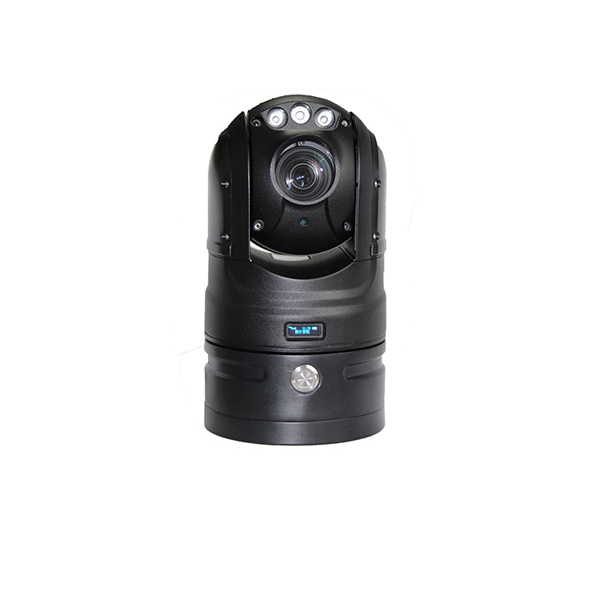Introduction to 4G PTZ Cameras
4G PTZ (Pan-Tilt-Zoom) cameras represent a significant advancement in surveillance technology, offering wireless connectivity and high flexibility. These cameras operate over cellular networks, making them ideal for remote locations where traditional internet access is unavailable. In the process of selecting a supplier, understanding the core functionality and advantages of 4G PTZ cameras is essential. This knowledge enables a better-informed decision, promoting effective integration into existing security setups.
Understanding Your Surveillance Needs
Coverage and Location Requirements
Before choosing a 4G PTZ camera, assess your specific surveillance needs. Consider the coverage area, such as large outdoor spaces or specific entry points, and the importance of remote accessibility. This assessment will guide the selection of camera specifications and features, ensuring the solution aligns with your security objectives.
Application Scenarios
Understanding the intended application is crucial. Residential, commercial, and industrial environments each have unique surveillance needs. For instance, monitoring a construction site differs significantly from securing a home, influencing the type of camera and features required.
Key Features of 4G PTZ Cameras
High-Resolution Imaging
Select cameras that offer a minimum resolution of 1080p to ensure clear and detailed footage. High-resolution images are vital for accurate monitoring and incident review.
Motion Detection and Alerts
Advanced motion detection capabilities enable efficient surveillance by notifying users of unusual activities. Look for cameras with customizable alerts to prevent unnecessary notifications.
Night Vision Capabilities
Effective night vision ensures 24/7 surveillance. Cameras with infrared LEDs or low-light performance technology provide clear images even in complete darkness, essential for round-the-clock security.
Assessing Connectivity Options
Network Compatibility
Ensure the chosen 4G PTZ camera supports the cellular networks available in your area. Compatibility with multiple carriers and network technologies, such as LTE or 5G, enhances connectivity and performance.
Data Plan Considerations
Evaluate data plan requirements for continuous camera operation. Consider the data consumption based on video quality and streaming frequency. A cost-effective data plan is crucial for managing long-term operational costs.
Evaluating Camera Durability and Design
Weather Resistance and Ingress Protection
Opt for cameras with robust build quality and high ingress protection (IP) ratings. An IP65 or higher rating ensures the camera withstands harsh weather conditions, making it suitable for outdoor installations.
Design and Aesthetic Integration
Consider the design and size of the camera for seamless integration into its environment. Discreet and aesthetically pleasing designs help maintain the visual appeal of residential or commercial spaces.
Comparing Costs and Value
Initial Investment and Long-term Savings
While upfront costs may vary, consider the long-term value of the camera. Durable, high-quality cameras often offer savings on maintenance and replacements, justifying a higher initial investment.
Savings Through Advanced Features
Features such as solar power compatibility can reduce energy costs significantly. Evaluate energy-saving options as part of the overall value proposition.
Importance of Brand Reputation
Reliability and Customer Support
Choose a supplier with a proven track record in producing reliable equipment and offering comprehensive customer support. Manufacturer reliability affects long-term satisfaction and system efficacy.
Research and Peer Reviews
Consult peer reviews and industry analyses. Feedback from other users provides insights into the experiences with different suppliers and manufacturers, particularly those based in China, a significant hub for camera production.
Installation and Maintenance Considerations
Ease of Installation
Consider the complexities of installation, which may include mounting options and integration with existing systems. User-friendly installation processes minimize downtime and additional costs.
Maintenance and Support Services
Regular maintenance is crucial for optimal performance. Choose suppliers that offer comprehensive maintenance services and readily available support to address any technical issues swiftly.
Privacy and Security Concerns
Data Encryption and Security Protocols
Security features such as data encryption are critical in preventing unauthorized access. Verify the security protocols implemented by potential suppliers to protect against data breaches.
Regulatory Compliance
Ensure the supplier complies with industry standards and local regulations. This compliance is essential for operational legality and the protection of sensitive information.
Making the Final Decision
Balancing Features and Budget
Ultimately, the best choice balances desired features with budget constraints. Prioritize essential features that align directly with your security needs, ensuring cost-effective yet robust surveillance solutions.
Supplier Partnership Considerations
Establishing a reliable partnership with a supplier in China can enhance your surveillance system's longevity. A dependable supplier supports ongoing needs, aiding in scalability and future upgrades.
Soar Provide Solutions
Soar offers comprehensive solutions for selecting the right 4G PTZ camera supplier. By understanding the unique needs and constraints of your surveillance requirements, Soar provides tailored recommendations. We ensure compatibility with local network providers and offer robust support services for seamless integration and maintenance. Our solutions prioritize security, reliability, and cost-effectiveness, empowering our clients to achieve their surveillance goals with confidence. Let Soar guide you in securing a trusted partnership with a qualified supplier, ensuring your safety and peace of mind.
User hot search: Wireless 4G PTZ Camera
